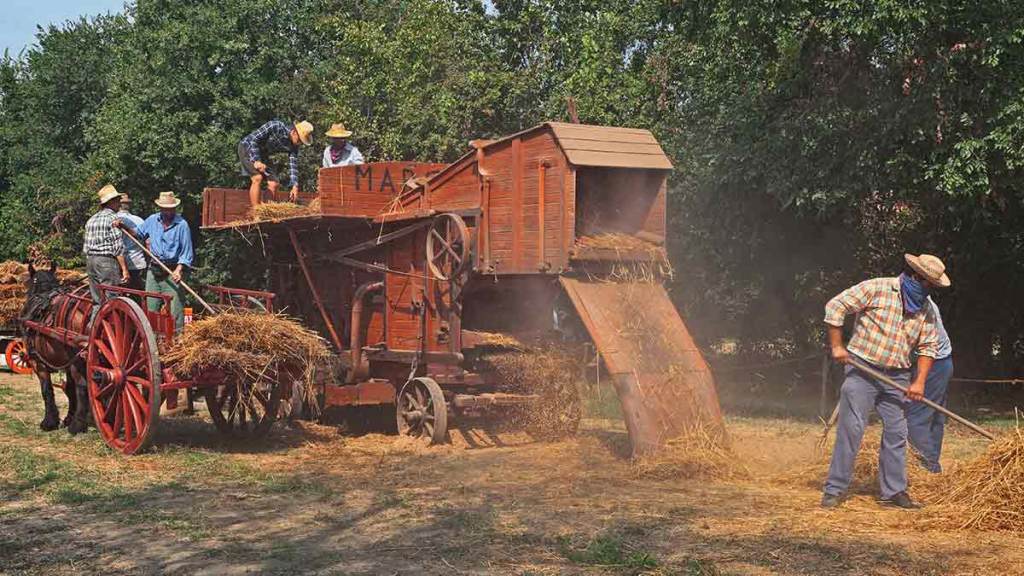- Candidates
- Login
- Set Up Account
- Create a Job Alert
- Search Tools
- Resources
- Employers

The ability to grow safe and abundant food has a direct impact on our survival as humans, as well as on our health and overall quality of life. Throughout history, developments in agriculture? resulted in improved food production techniques, food quality, safety and access. Historians have identified periods of radical change that have each been associated with significant agricultural developments.
DYK? Agriculture started about 15,000-20,000 years ago when the first human beings began cultivating crops and raising livestock for food. This resulted in a slow and steady increase in the world’s population.
This is the story of agriculture – how it has evolved to feed the world and allowed the human race to thrive.

The first Agricultural Revolution began 12,000 years ago, coinciding with the end of the last ice age. Some nomadic hunter-gatherers who had hunted, fished or foraged for food became farmers with a more stationary lifestyle and lived in small villages. This evolution forever changed how people lived, ate and interacted.
Researchers believe this might be because as they became better at cultivating food, they produced surplus seeds to plant and crops that required storage. Both of which spurred population growth by making food more consistently available. Tending and storing them for human consumption throughout the year, as well as needing a place to keep seeds to plant in the upcoming season, demanded a more stationary way of life.
This shift from hunting to farming also triggered numerous innovations, including new tools , commerce, architecture and the development of new horticultural practices. Here are some examples:
This period also ushered in the potential for modern societies – civilizations characterized by large population centres, new technologies and advancements in knowledge, art and trade.
In the 17th and 18th centuries, there was a second period of agricultural advancement concentrated in Europe, which accompanied the Industrial Revolution that began in Great Britain. Through a series of cultural and technological changes, farmers significantly increased the amount of food they could grow.
This was the first time farmers were able to raise crops to sell rather than just for their own consumption. This was because:

Innovations during the second Agricultural Revolution included the steel plow to break up the soil to prepare it for planting, and the threshing machine, which removed grain from the stalks and husks at harvest. These inventions resulted in farmers being able to grow and harvest more than when intensive manual labour was required.
Access to larger amounts of food led to better diets, longer lifespans and a rise in population. As the population increased, so did the pool of workers in other industries. Since most of these jobs existed in cities and new factory towns, mass migration to urban areas – urbanization – began to change the cultural landscape and population distributions throughout the world.
At the start of the 20th century there was a rapid evolution in agricultural technologies that included the development of:
This period of time – known as the Green Revolution – resulted in improved global food production, dramatically reducing infant mortality and increasing life expectancy. It also prevented an estimated 18 to 27 million hectares from being converted to agricultural land by producing more food on the land that was already available.
Leading the way was Norman Borlaug, an American agronomist who worked with scientists in Mexico, India and Pakistan to develop new varieties of wheat that would grow in a wider range of environments. In 1970 he was awarded the Nobel Peace Prize for his contributions to reducing world hunger and he is credited with saving a billion people from starvation, earning him the title of “Father of the Green Revolution.”
One notable innovation during the Green Revolution was the Haber-Bosch Process. Named for German chemists?Fritz Haber?and?Carl Bosch, this technique uses high temperature and pressure, combining hydrogen and nitrogen to produce ammonia, a basic building block of fertilizer. Ammonia releases nitrogen, an essential nutrient for growing plants. The expansion of the world’s population from 1.6 billion people in 1900 to today’s almost 8 billion would not have been possible without ammonia.

This century has experienced incredible progress in agriculture and food production, as a result of research, technology and the adoption of better farm management practices. Examples include:
Technology and innovation will continue to allow farmers in Canada to do their work in more efficient, environmentally-friendly and sustainable ways. It will also enable us to ensure the availability of safe, healthy food now and in the future.
Every agricultural revolution is built on the one before it. As a result, food production has evolved and changed tremendously over the past 12,000 years – from ancient communities and more primitive equipment to modern farming techniques today. Over that time, farmers and farms have continued to adapt, grow and become capable of producing more food with fewer resources. And, given the vast expansion of agricultural knowledge due to research and development, as well as the need to produce food for an ever-growing population, the next 100 years is likely to be just as revolutionary.